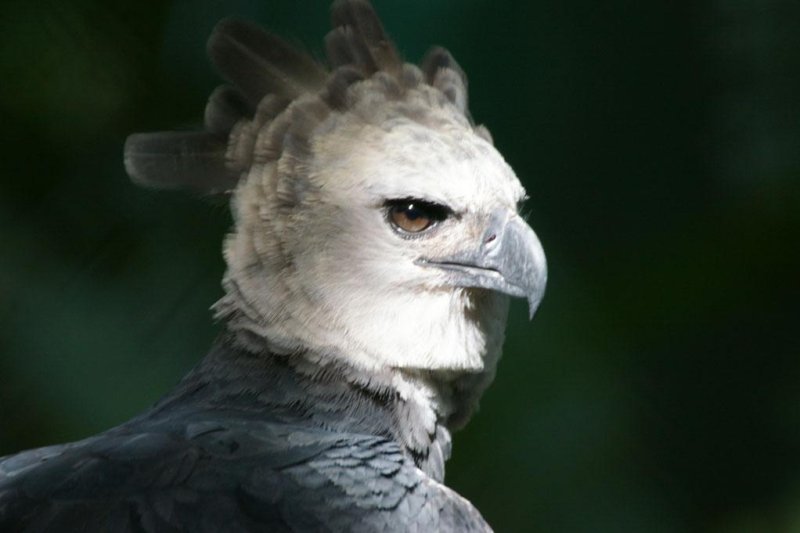
Deforestation in the Amazon is making it difficult for harpy eagles, one of the world's largest eagle species, to feed themselves and their offspring. Photo by Haui Ared/Wikimedia Commons
June 30 (UPI) -- The harpy eagle, known in Brazil as the royal-hawk, is one of the world's largest eagle species. Like so many apex predators, the harpy eagle has suffered considerable habitat declines as a result of human development.
Though the harpy eagle's range remains extensive, its distribution and population numbers have steadily declined, and the latest research suggests deforestation in the Amazon is making matters worse.
Harpy Eagles aren't born great hunters -- they learn and develop their skills over time, and chicks and fledglings must rely on their parents for food.
According to the latest research, published Wednesday in the journal Scientific Reports, parents in heavily deforested regions of the Amazon are having a tough time finding enough food for their offspring.
"Their global distribution has contracted by 41% since the 19th century, and currently, 93% of their distribution range is within Amazonian forests, their last stronghold," researchers wrote in their paper.
For the study, scientists monitored several harpy eagle nests throughout the Amazonian forests of Mato Grosso, in Brazil.
Using direct field observations and camera footage, the researchers analyzed the hunting and feeding behaviors of harpy eagle parents.
Scientists also analyzed bone fragments near the nests to confirm what the eagles were eating.
Of the more than 300 prey items collected and documented by scientists, nearly half belonged to two-toed sloths, brown capuchin monkeys and grey woolly monkeys.
Researchers found three eaglets dead from starvation in areas featuring deforestation rates of 50 to 70 percent. In these same regions, where forest canopies are sparser, sloth and monkey numbers are depressed.
In some places, habitat losses are extensive enough to deter eagles altogether.
Roughly 35% of Mato Grosso features deforestation rates greater than 50%, and no harpy eagle nests were found in areas of the forest featuring more than 70% deforestation.
The authors of the new study determined much of the so-called "Arc of Deforestation" in the Amazon, which includes parts of Mato Grosso, is unsuitable for harpy eagles.
The latest estimates suggest deforestation in the Amazon is responsible for a loss of 3,256 breeding harpy eagle pairs since 1985.
"Our results suggest that restoring harpy eagle population viability within highly fragmented forest landscapes critically depends on decisive forest conservation action," researchers wrote in their paper.
No comments:
Post a Comment